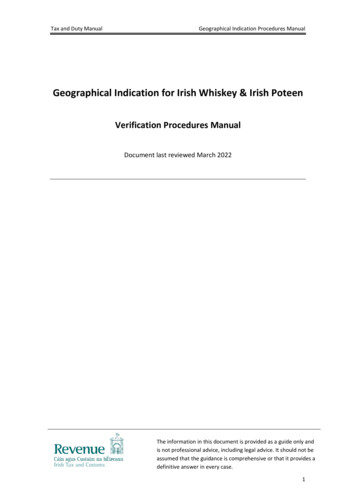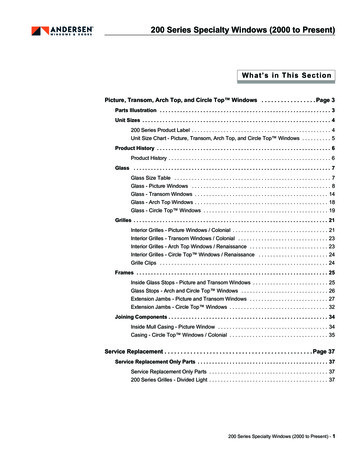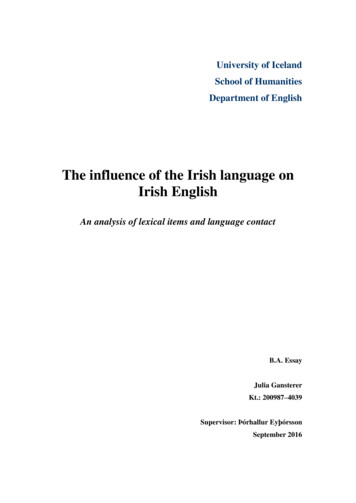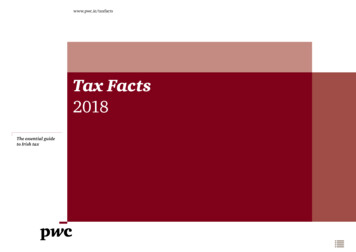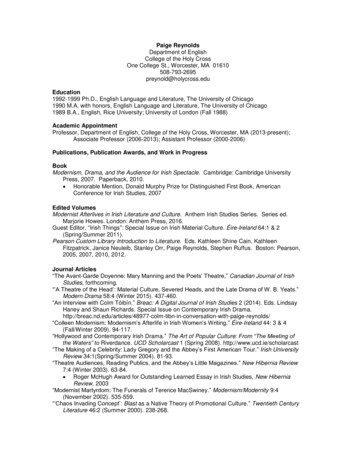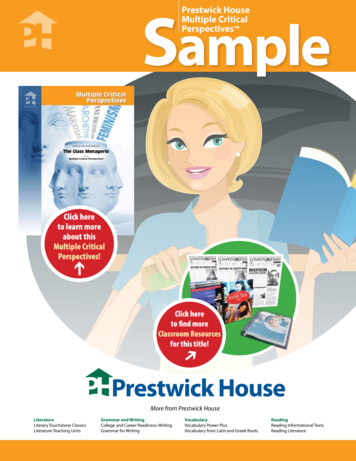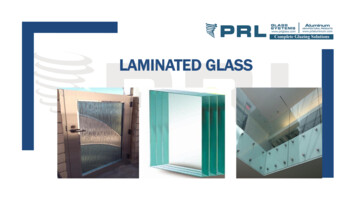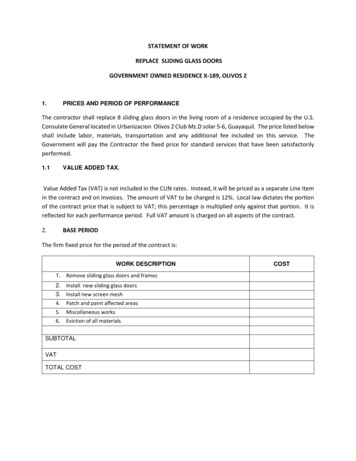
Transcription
:f \r- TdcJzinillSNISBIMVaan librariesNVINOSHill/MSJRARIEs' SMITHSONIAN INSTITUTIONiniiiSNi — NviNOSHiiiAis SMITHSONIANIN:NOIinillSNI NVINOSHilW * S;*332zlibraries Smithsonian r- inS3iavaanZrZEX LIBRISRARIES SMMOSHilWS S3The Cooper UnionIvTuseiimXLibraiyTHE GIFT OFMrs. A. Stewart WalkerZrnsoNiAN2—2-JJRARIES SS:otoC/5zlinillSNI NVINOSHilWS S3iyVyan LIBRARIES SMITHSONIAN l ww.,.zzz BRARIES SMITHSONIAN n v«50\/NOUniliSNI NVINOSHilWS* SINSTITUTION5 n5-« a:03
SSMITHSONIAN INSTITUTION NOIiniliSNItoz i -t2 / NviNosHiiwsjiZJ —anS3 a vy1 5SMITHSONIAN INSTITUTIONz r; C/)libraries Smithsonian institutk «5N os «'5SNVINOSHimS S3iaVd92- / 5 i 3 N0liniliSNl"'NVIN0SHllWS S3 b VM aIZzr-CO 'jrNviNosHims S3 avy a n"Li brar es' smithsonian'instituti1Smithsoniansiinstitutionz enNoiiniiiSNi n-- S ro/ 2j X zm 73 WNviN0SHiiws* S3iavM in.„S3iyvaan libraries smithsonianIinstituti4i 'NviN0SHimsmw . " ' ""/ m " w S SMITHSONIAN INSTITUTION NOIiniliSNI NVINOSHillMS S3iyVM towtozz . S-A.CO 1/ I NVIN0SHillAJs' S3ZSz-JSMITHSONIANr-IoMVy a 11 11 BRAR Es' SMITHSONIAN INSTITUTIIZlzINSTITUTION NOIiniliSNI NVINOSHilWS S3 Id VMS rz2O,./X.c:y / ': fw*
THE CONNOISSEUR SERIESEdited by C.OLDofBOOKSforCOLLEaORSREGINALD GRUNDYIRISH GLASSBYMrs.Graydon StannusLLUSTRATEDLONDONMCMXXTHE CONNOISSEUR
a'v-r:51746
THE CONNOISSEUR SERIESOF BOOKS FOR COLLECTORSEdited by C.OLDREGINALD GRUNDYIRISHGLASS/
THE CONNOISSEUR SERIESEdited bv C.OLDBOOKS for COLLECIORSREGINALD GRUNDYofIRISH GLASSBYMrs.Graydon StannusILLUSTRATEDLONDONMGMXXTHE CONNOISSEUR
: t?. p ,if -' 'nFEB 2 2MfiluA' Vmi
THE FASCINATION OFALLolduniquecertainbut oklinteresting,ist«lassIRISH GLASSqualitiesglass possessesIrishmakewhichitscollectionpeculiarly fascinating.Initwean unsurpassed beauty and depth of colour—finiia poetry of design and a velvet softness of touch which area pure joy to the connoisseur.But before describingidea as to where andCjlassglassIrishwhenmadenotseriously ,JQgg j gfof glassexactly where theIrelandinsmall extent during the Middle Ages, butTHE BEST PeriodsOF IRISH GLASSsomegivefirstwas produced.ithave beenappears tomeletcommencedthere 'glass-houses wereveryatheuntil"What types*sixteenth century.were made attomanufacture wasits" this early period, orsituated,authentic records to show, only the glass-loretherearenohanded downfrom father to son through the ages.Some was undoubtedly madeafactmadecolouredthethatat that lin.///t \Windowalsotomadeglass,inhave beentime onwardsItwas notcolouredglass,and drinking glasses wereIreland in 1585, and their manufacture appearscarriedinmore oronlesssteadilyfromthatvarious parts of the y that the great period of Irish glass-making arrived,and pieces were producedrivalling,oreven surpassing, the
—OLD IRISH GLASSmadebest wares of their kindglassEngland and onwas made that now possesses aexcessively rareendsummittiieCon-theIrishdistinctive interest to theand possess few typicalof their ambitionitwhilst byand produced glass absolutelyEnglish pieces, andindis-contemporaryfromofqualities,period Irish glass-makers had attained thethatoftinguishablerobbedallEarlier pieces that can be authenticated are bothcollector.theinDuring the next hundred years urthecollector.Itisa curiousWaterfordofhuman endeavourironjr ofnowglass,and beautiful dark grey blue tone,whiter and clearerlikeceeded after 1815.a century latertriedThey endeavouredquite an early date.totothe makersforitseradicatemakeuniqueitfromtheir glassthat of Bristol, and in this they suc-Littlepeopletfiatdeservedly famousindid these glass artists think thatallpartsofthe world wouldbetrying to reproduce that self -same colour without success.GLASS FACTORIES IN IRELANDFrom timetotimehumorists overherestatethat"nowas ever made in Ireland," so that the following list oflocalities where a few of the best known glass-houses stoodglasswillbe of interest:ANTRIM:Bottles,(BALLYCASTLE)1755 TO 1790Fineflint,, "-'tglass, heavy, ratherand veryBELFAST.1781 TO 1870heavy rummers, and verywhite handsome deep cuttingbold engraving.fineGlass wasIrelandfrom other rharts ofJwereengraversForeignbe decorated.broimhti tocoarsenil"seful glass.Jicre-employed and excellent work done.
IRISH GLASS01-1)7Finely cut glass of every description, elelicate engravinj onblown ware, gilding ' * rummers,irs1782 TO 1844canters,andparticularly;andheavy theinfamouslight-blown forde-whole dessertthirtiesservices of beautiful colour and various cutting.As the card ofmembershipUnion (shown on page9(-i)Corktheof(jlassCutters'proves, " lustre " cutting originatedhere.There were numbersofexist,DUBLIN.CIRCA 1700 TO 1896stillwhich Pugh's productions (though ''The early mouldedvery much like Bristol,"lustre" cutting.pieces were very elegant and quaint,Ievei'y kind ofMany Hne specimensof note, particularlyrather late) are worthy' hisbut, so far aswhichof houses here inwhite and coloured glass was made.have observed, heavier, and, of course, not sowhite or clear, neither did they ever show the richness of theSouthernglass.DRUMREA: DuNGANNON)1771 TO 1776Muchtheclcarcr;colouredsame kindnoted forglassof glass as Cork, butfinebothingreenbottlesamberandand dropsfor chandeliers.ANEWRY:1790 TO 1847great variety ofvery heavy.plain,glassf intAThe1729 TO 1852great deal of tableof themost beautifulchandeliers, candelabra, boat-shapedperfect.Theperiodwas round about 1780. 1820 the glass became much whiter.Afterandwaterford:cut andwas made here.Produced every possible kind of glasscolour and cutting.glass, both turnoverbowls,were Aboutsome wonderful deep "step" cutting was done, whichmade the glass, in some lights, look like silver plate whileconstantly comedessert services were a great feature, andin contact with parts of these services (tucked away in cellarsand odd places) of the most surprisingly beautiful woi-kmanship and colour.181v5;I
"OLD IRISH GLASSOnewas erected here onof the very earliest glass-housesStannusthe1*670 " " ' i bout' ' ""andproperty,lacU of financial support.oritfew years fromainbelieve drinking glasses1islittleparticular productions,itsdowncloseditverybutwereitschief output.Foreignticularlyworkmen wereemployedlargelj'engravers, and gilders.cutters,stands alone.ItisIrish gildingrubbedbedeliberately scrapedoffrough, ishvery hard, and cannottheWhenway.usualleaves the glass underneathquitehas survived ordinary wear and tearThe process was chemical, and it is a greatit wasnot done.Wry fine bright gildingwas executed for some years, about 1786, by a Germanalmost intact.morepity thatofcalled Grahl.Tliethe last1896, Pugh, of Dublin, beingindustry died out aboutmakerThe Last Makerof flint glass inwith being thecutting,Glass Cutters'Union,firstbut thealreadyHeIreland.platerarereferredisoften creditedintroduce " lustretoofCorktheshows thatto,thisdecoration must have been done in Cork about 1785. sincemayitbe presumed that the pieces they have chosen as beingowncraftold juginrepresentative of theirproduced.Thefinewould be those most largelythecentre,forinstance,isa splendid specimen of " lustre " work.While on the subjectinof the workers,itto these artists in glass't TJ ' '' 'WAGESDublin Museum.princelybe ofinterest,.cutterearning atsumoflisrecordedintheThe founder received the7s.forhisweek's work,,The glass-maker himself (notor the engraver) was evidently a piece-worker,most 30s. a week, and was doubtless a mightvwhile the fireman only gotthewillthese days of high wages, to recall the remuneration paidwealthy man.6s.
OLD IRISH GLASSNaturallyownerto theButthe chief thing he burnt.evenHowever,their ti-oubles.IfthoseinIrishmananfuelinof a glass-house, aslateIrelandwood wasthe seventeenth cen-inwas passed prohibiting thetury an Actthis purpose, somuch.cheapness ofextraordinarythewas a great help9fellingtreesoffordays manufacturers hadearl\-do not think this interfered veryIwants a thing,willittake a greatmore than an Act of Parliament passed by the quiet,Englishman on the otlicr side of fhe -liuifcr todealeasy-goingstop hint.Asnineteenth century,late as themyinfather's time, ourvillagecarpenter would come and buy a good-sized ash treefor6d.Is.Those not so wellWeby the light of the ttleweofffreelythemselveshelpeddo not bring people to justicesort:we should ha\e nodid.THE CHARACTERISTICS OFIRISH GLASSmoreIrish glass,may bemodernandespecially Waterford, of the typical period,distinguished from contempoi'ary Englishfakescharacteristics whichofnationalitiesallmaybe groupedbyaand foreignnumberofunder the headings ofWeight, Colour, Resilience, Feeling to the Touch, and Ring.LetmeIrishtake these one by one.glassisgenerallyveryceptions to this rule, markedlyheavy, though thereinthe blownabout 1735 to 1750, which were extremelyWEIGHTThese pieces were neverlight.only talcut,butBut even these can bedistinguished from the foreign pieces, as they neverlittleare ex-specimens frompeculiartoAir bubbles often appear, but never sand.show thetheforeign
loOLD IRISH GLASS.AllIrishglassglass has a peculiar depthCork and Waterfordofthisrespect.Colourbetween the productsducedthesametwoof themysteriousdistinguishedin."'.Itssteelor grev-blue standsisverylittleTherealone.but the earlyof tone,especiallyisdistinguishtofactories, as both places pro-(supposedcolourgreybetocaused by impure ingredients), and the workmen employed atbt)thplaces frequently changed factories.thatsome CorkWaterford never has.Buthave noticedIhas a decided yellowishglassSometimeswhich county a piece came, andisithas led experts to referthisto the products of these factories indiscriminately asMostglass."of the pieceswhichtint,impossible to say from"Munsterhave come across, actually im-Ipressed with the mark " Cork Glass Co.," were of ttributedtovery frequently suggested that theischemical action of the air onoldasglassIrishtheyearsby has something to do with the mystery of this wonder-rollfultint,and, strange asthat glass does changeNomay seem,ititisan undoubted facttone with time.itsdescription of Waterford glass would be complete with-some referenceouttothepeculiarbloom so oftencloudyfound covering the metal, whichTHE BLOOM ONWATERFORD GLASSi-ubbed milkiness foundinoff,bloomiscanbut will assuredlv return.beThismust not be confused with thedecanters, etc., which is caused by water"or wine being allowed to remainItblue-Waterford,inthemforlongperiods.quite different: a soft bloom, exactly like that on grapes,the same coIolu", or even darker, than the glass, and oftenwillbefoundformingrunning round andisofrainbowithuedo not for certain know theprobably somemetal,bandonlyatmosphericfound onactionveryonearlythedark
OLD IRISH GLASSThese pieces are mostas tiiey shouldciatedinteresting, butSomebe.time'iialways appre-notat»oparted with aImagnificent Waterford bowl of this type, only to ttnd a weeklaterithad been chemically polished clear andnot a tithe ofglassIrishhenceitsfarisResilience oftougher andchipandit,constant use.have seenIsolidonhardaand actually bouncesinawayanythehas a wonderfulItthatelasticity,have never foundImy roomschandelier to the ceiling of one ofthe result that the chandelierof twelve or fifteen feet.from suchinanygave way, withto the groundfellfrom a heightwas, of course, broken with theItheight, but the centre pendant, a large solidabrokenpiece of cut glass, had not beenIrish glassfall'Recently the ring securing a large and valuableother glass.ihc force ofpiecesbeingwithoutfloorItor evenit,'worse, beyond "singing" loudly.fallinany other,thanstrongerblow to breaktakes a severeI.GLASSbright, withleft.wonderfid survixal even whenits IRISHbeautyfalltliedoes notinhadflaltcnedfeelharsh or coldforeign, but gives a sense of softtheleast,fhoiisj /ipoint.itslikewarmthmost English orThereto the touch.something of the same distinction asbetween porcelain and earthenware, thoughisTHE FEEL OFIrish GlassTO the Touch'has tosperience;accjuirewillaknowledgeand though the tyro may atno difference between thehemarkednot nearly to such iveex-littleor English glass,orifsense of touch by feeling authenticatedpieces of both varieties, he will soon find that thereisa smallbut perfectly distinguishable diff'erence between them.Imust makethe ring ofIRISH GLASStospecial '""' glassmention of the ring of's imp"'"tantpoint.IrishAllhas a clear, definite, brightanyone with a musical earitwillglass, asBritishring, butbe interesting to listen
—OLD IRISH GLASS12to thepeculiar throb ina rich throb, sometimesNoIrish glass,havealsorule,do not say that you get1it.instance, would expect a candlestick to ring,one, foraa ring aslarge pieces) almostonly in the greater part ofor a salt-cellar, or a thick shallowasmuchnot soglass,between two notes.like a vibratothis in allIrish(particularly inspecialavoices, so, naturall}', peopleheavily cut.piecedisliketo.Jugs,displayingtheirmust use their discernment.FAKESThese are innumerable, and belongmodern, sinceNoIrish glass firsttoperiods,alloldandbecame popular.glass in the world has been somuchnonecopied, andhas, in the long run, stood out so successfully in defying theThis constitutes one of the great attractions of Irishfaker.glass to the collector, for thoughbeen mademanyimitations ofhaveitof sufficient excellence to deceive the inexperiencedand unwary,cannot be copied sufficiently well to deceiveitthe connoisseur.Theandsomefinestevenreproductions fromGermany,of the ,thoughexceedingly clever.At the present moment thereglassFrance,colour andisan enormous amount ofon the market, and some time ago aremarkable copies wereincirculation.lotThey were theofbestthat have yet appeared, especially the urns and candlesticks,andfiiiiiibersfellinto thehandsof theweakness, however, was very noticeabletall pieces,unwary.Onespecialthe colour fell in theleaving the tops whiter than the bases.
OLD IRISH GLASSAs has already been pointednearlyout,glassIrishallheavy, and a very large proportion of the modern fakestotheattainrequiredgeneral rule of weightand only engraved or quitefrequentlyforgetsremembersit,tobe es, but never thesand which, asthe metal peculiar to foreign glass.have alreadyIThe most importantforeign imitations 'foimditisWatcrfordrn.'nnr''''thantone stands alone,SomeinIrishglassandtheir colours,theearly glass ofinandthisCork andanyother.orsteelItsgrey-blueinallprobability will continueInarticle.the analysis ofIrishno trace of cobalt.copiesgoodbetweeninThespecksalthough, alas, the thin cobalt and ultra-sold as the genuineislittlewhich deftes the copvist moremarine colours have been, andglass therehealmost invariably appearsaid,distinctionto beisrespectbe,however,yet another point of distinction.isshowinanoffaith asalmost emerald greenWaterfordglass.Howha\eearly piece of Waterfordthe analysis of anchangedcould green beproduced from lead oxide, potash, soda, and silica?istheThe fakernever cut.point.ofhandstoblown speci-and produces plain or engra\ed pieces similarIrish pieces oftentoexceptionIrishinproduced from about 1735 to 1750, which were verymens,light,A markedweight.isisfail— forthis" pot metalglass of the dark grey hue.The peculiar ring ofThe foreign copies arehas already been described.Irish glassquitedifferent.not ring atSometimes theywillespecially the wine-glasses;all,Difference in theRING OF OTHERthe better ones give a sound of sorts, but.GLASSES' ' to,ii '' '"ythe note''* -''isj "d,ritriicarekillynever true, just aquite unlike the "singing Waterford."i-listenedlittleflat,
OLD IRISH GLASS14THE INCREASING POPULARITY OFIRISH GLASSofiiuiltitude'riictheDurinj*tliefakes on the market beardemandiiiereasiiii forIrishthoselast six years,have a knowledj e oftestimony to lass.membersof the publievalue of the genuine Irish artiele, whieh, of course,the fact thatdue toiscannot be copied sufficiently well to deceixeitTheeonnoisseiM'.thewhohave realised more and more thet*lassoutcomedirectofthissteadyaisincrease in the market value, and rare specimens, which weremadeat 10toandafrom 25s. to 4, now 400;infact,beautiful bowl passed throughMagnificent specimens ofIrishtheinalreadyDublinbeenPhotographsofMuseum, andreproducedmy handsglass havemostat 550.found their wa\-well-known piecesof ecently for 750,be seen by the plates showninto English collections, as willin this article.anything fromfetchreadilypiece soldsinglea:buttheaccompanying photographs are exceptional specimens, takenexclusively from HiiL lis/i collections, and a very large numberthem have passedofItli'ishisabsolutelythi-oughmy ownimpossibletohands.becomeasound judgeglass without years of experience, and, aboveall,ofwith-out the constant actual handling of piecesEXPERIENCEESSENTIAL -amongstit 11i j. j-gc;and dcscriptions, consequentlv-'theallhis lifegenuinedealerIrishhas a very greatpullwhohaswithregardlivedtoactual knowledge.So many specimens uere madefore of special shapetheuninitiated toandorder, andtocutting, thatitiswere there-very difficult forrecognise a piece as being of any certain
OLD IRISH suchI-orhenaturallyispiecesinto'5mystifiedmore oran ancestor of mine hadinstance,possession an early deep colouredcutmade about 1750. His son, indiamonds" (a cutting then muchthe"fiatinbein resultaspecimenofhisinhowl, cover, and stand ofexceptional quality,itwhen hewell-knownless"wavy"darkearly1790, hadinvoj ue),j iass,adorned with the beautiful cutting of forty years later, andis only one instance of many which could bequoted.thisGreat quantities ofIrish glass were made, and the oflicialrecords show that large numbers of pieces were exportedIrishtoglassSOLD ABROADIrish,America, Spain, Portugal, and the West. intlies,\nMany etc.,., our finest specnnensotwere also taken to Holland, where theyfound a permanent home, and were extensively copied by thei'oreignglass-makers.France was very keen on Irish glass, andhave unearthedsome very lovely and absolutely genuine specimens,1thereespecially wall-lights and chandeliers.Needless to say, a very big trade was done by the glasshouses direct with oldwho gave large ordersranging from single pieces to complete tableservices, of which few records appear to have been kept.Irishfamilies,for glass-ware,AaslargeIrishamountfamiliesUNCUT PIECESof Irish glasswas made and put(especially thosehouses)wh(jpreferredlivedtoby, uncut,near the glass-choosetheirowncuttings fr(;m drawings, so as to l)a\e some-thing different from their neighbours.numberof uncut piecesstilltoThis accounts for thebe foundinvarious parts jfIreland, especially thick finger-bowls, which were, undoubtedly,madeingreat quantities to await orders.
—16OLD IRISH GLASS.Thesome ideafollowing plates givewhich haveglassofspecimensThe illustrationsof the beautiful piecesbut er be placed on the marketmindpoetic in design as their owners are inforlivemanytheandsonsheirsother treasures oflovetoIreland's;probablywill—pieces aspieces that willand cherish with theperiods,finestlong afterSinn Feiners have ceased their endeavours to destroyisallthatbest and loveliest in the old country.At the time of writing this, I find an enormous amount ofspurious " Irish " glass on the market, and I take this opportunity of warningaremyfriends)thatallloverspure,and somealltocollectorsbe exceedingly careful.shouldglassIrishofand dealers (manykeepItincollectionsof these fakes are so clever that dealers willifthey areavoid the ignominy of having pieces which they have soldgoodtime,isinthemfaith returned tothe bestallknownas "wrong."At the presentdealers in Irish glass are trusted byand their advicetheir customers,Itwhomessentialistheirhave to exercise the greatest vigilance and care oofistaken without question.the best interests of their great profession that thissense of confidence should remain— hencemyfriendlyandwell-meant warning.In conclusion,written, asmayitis,be a realIwouldlike toat the request ofhelpthetotinguish between " right "excellentmanynovice,andto go deeper into glass-lore,littleadd thatIof thehopethis bookletlovers of Irish glassandassisthimtodis-" wrong."To those who wishwould strongly recommend thebook written by Mr.well-known curatorIDudley Westropp, theDublin Museum.
ILLUSTRATIONSPliofos byHana.
OLD IRISH GLASSBOWLS, DISHES, PLATESWaterford Bowl,circa 1780.Veryon three feet carved as paws.of the finest theAND TAZZEflatdiamondThis bowl, whichauthor has ever seen,iscutting,isoneexceptionallynotable from the fact that the pontil has been worked upintoan ornament insteadIn the collection ofof beingbrokenoff".Commander Swithinbank, R.N.NOTE. — Accordingto official records the Waterford Glass Housesclosed down from 1750 to 17S0, but there exists a good dealof glass traditionallj- made within this time, and certainly havingall the attributes of Waterford, and being fashioned in contem-porary styles.Oval Bowl and Dish, cutshape.in flatWaterford.In the collection ofMr,Bliss.diamonds, and of unusual
OLD IRISH GLASS19 B mw V Jb"'" H
OLD IRISH GLASS20MuNSTER Glass Bowl,cut.circa 1780.11 in. high.In the collection of Mrs.Hall.Waterford Orange Bowl.InHeavily but beautifullyMajor Pope'scollection.Unusually l rge.Circa XldQ.
OLD IRISH GLASS21
OLD IRISH GLASSRare heavily chiselled Christening Bowl.26in.Irish,1760.across.In the Autiior's collection."PiNCHHowide, 8in."Sided Bowl on round domed foot.iiiijlT.In the Author's collection.11in.
OLD IRISH GLASS l
24OLD IRISH GLASSWaterford Flower Bowl,12in.glass, finely cut, with castellated edge.In the collection ofCommanderhigh.Heavy earlyCirca 178G.Swithinbank, R.N.
OLD IRISH GLASS25
OLD IRISH GLASS26Awonderful early " Pinched "markable"rainbow"dome.""Theround the body.bandfootBowl, showing thecolourfaintofisre-runningsquare and moulded in aNote that the waste metal running from thesquare base has not been cut away, proving that thispiece, forThereissome reason unknown, has beennosmall one (3madethistrace of " milkiness "in.high) besideminutesize foritisleft unfinished.about this bowl.Thea traveller's sample,convenienceincarrying about.In the Author's sallWaterfordfitsRevolvingCentretogether without any metalCirca 1780.In the Hon. Mrs. York's collection.
OLD IRISH GLASS27
OLD IRISH GLASS28Large Two-handled Posset Bowl.as 1750.Possibly as earlyIrish.In the collection of Mrs. Hall.Rare heavy, dark, plain Ogee Bowl.In the collection of Mr. Robert Frank.Irish,about 1760.
OLD IRISH GLASS29
OLD IRISH GLASS30Anexceptionallyheavilylargedomed base;"Turnoverearly.In the collection of Mrs.Cork Bowl, onFlat cutting.12in.high.Magee.Waterford Canoe-shaped Bowlshape;"1780.In the Author's collection.;deep colour and rare
OLD IRISH GLASS%i%»# ,.: Hf HBftbiulHi SS 1 K *
OLD IRISH rishGlass,Of a beautiful deep colour.bog-oak,Celticcarving,theengraved.The standIrishhound being verycarefully executed.In the collection ofCommander Swithinbank, R.N.wolf-
OLD IRISH GLASS33
OLD IRISH GLASS34Two-handled Cup and Cover, heavy1780.Dublin(copj' ofBristol butclear glass;muchcircaheavier).Author's collection.Waterford Bowl and Stand,flatcutallover with large,double stars; circa 1780.Author's collection.Strawberry and Fan Cut Bowl.MadeatWaterford1790, and bearing the Stannus crest, Hnelj' engraved.Author's collection.in
OLD IRISH GLASS35
OLD IRISH GLASS36Agiant"Turnover" Round Bowl andDish.Waterford,circa 1815.In theAuthor's collection.Octagonal Deep "Step" Cut Watekford Dish, circa1825.Avery unusual specimen.In the collection of Mrs. Oliver.
OLD IRISH GLASSn
OLD IRISH GLASS38Set of " Step'Cut Dishes with fan handles.ford, circa 1820.In the collection of Mrs. Hall.Water
OLD IRISH GLASS39
OLD IRISH GLASS40Pair of Banqueting Tazze, Munster glass of about 1790.Madeof heavy. dark glassdomedfoot,are 13in.andhigh,inone piece, with a heavilyfinely cut in slashand weigh 32In the collection of Mrs. Hall.lbs.and diamonds.each.They
OLD IRISH GLASS41
OLD IRISH GLASSCANDELABRA, CANDLESTICKSAND CHANDELIERS\V.\i'i:k1'()uii Taui.i-:Luuris, of exceptional quality.In the collection ofMr.b'it/.royVVathki'oro Glass Chimnhymetal" blue drops.Author's collection.Chapman.Si;t,draped with deep "pot-Probably Dubtin, circa 1790.
OLD IRISH(JLASS43
OLD IRISH GLASS44Pair ofAdam Table Lights on Ormolu.with very pale amber drops cutin flat facets.IrishCirca 1780.In thepossession of Mr. Hobson.Pair ofWaterford Table Lights, hung withamber round dropsurns.Mr.LateAdam(Dublin),the palestand mounted on Wedgwoodperiod.Hugh Weguelin'sglass,collection.
OLD IRISH GLASS45
OLD IRISH GLASS46Three Waterford Facet-cut Table Lights, with almondshaped drops.1780{circa).Mr. E. Parsons' collection.Three Waterford Table Lights,high, with "almondMajor Pope'sCollectionof"Adamperiod, 24 in.drops.collection.Early Cork,Waterford,Glass Candlesticks, from oneandDublin:moulded heavy tonedglass (1750), to the tall facet-cut varieties of 1780-1830.
OLD IRISH GLASS47
OLD IRISH GLASS48Oneglass,of a pairofAoam Liohts.on old marble " Bosirestored.Author's ly
OLD IKISH(.I.ASS49
OLD IRISH GLASS50Typical pair ofperiod,out20Mr.with facet-cut "reflecting"prismaticin.J.earlyAdamdrops, whichthrowWatkrford Table Lights,colourswhenhigh.Parson's collection.thecandlesarelighted.
OLD IRISH GLASS51
OLD IRISH GLASS52Wati-:ki-()RI) Chani)ei.ii:w, cirai 1780.Mrs. Cox's collection.I- AKM.YWATi:Ri )KnCandi- LAHK ASTICKS with facet-cut ornament.Colonel Jenner's collection.aiidpairofCanom-:
OLl IKISII(.I.ASS53
{)i.n54WAri'K'i'oiM)AiliunIllllu-5II'.IRISHC'li \Ni i;iiriiotl.Aiidior's lolU'ition.i.ii'.K',CI .\ssinitsoriginalloiulitioti.
OLDii i:ji(s/.ASS55
OLD IRISH GLASSS6Adam Chandemer, Waterford,In theAuthor's collection.in its orij inalcondition.
OLD IKISH(.LASS57
s8OLD IRISH GLASSDECANTERS, JUGS, AND BOTTLESShapko Waterforo Juo.Author's collection.Unique Jug. ordinarily termed a freakIrish glass, circa 17t 0.Author's collection.piece,'25in.high.
OLD IRISH GLASS59
OLD IRISH GLASS6oPair of heavy oldMunster Glass Liqueur Bottles andan Early Blown Irish Glass Decanter, engraved.Author's collection.EarlyBlownCorkDecanters,engraving of the period.marked"Cork Glass Co."Author's collection.withtheprimitiveThese decanters are impress
OLD IRISH GLASS6i
OLD IRISH GLASS62Tankard, Waterford or Cork, circa 1780.Two-handled Spur Cup, probablytonedDublin,1750;deepglass, very soft to the touch.Author's collection.Heavy Lustre Cut Jug,Commanderflint glass,circa 1800.Swithinbank's collection.Swag and Diamond Cut Waterford Decanters,circa1780-90.Author's collection.Step and Prismatic Cut Liqueur Bottles, Waterford,1820-50.
OLD IRISH GLASS63
OLD IRISH GLASS64Set ofIi!aki.v"Munstkk"In the Author's collection.Juc.s.
OLD IRISH GLASS65
OLD IRISH GLASS66Set( rMari.y"Munsthk" Decanthus.In the Author's collection.
OLD IRISH(jLASS6/
OLD IRISH GLASS68GOBLETS, GUPS,Chalice, 1790-1800.OneAND GHALIGESSharp diamondcut,of the rarest pieces of Irish glass.In the collection of Mrs.Hall.13in.high.
OLD IRISH GLASS69
OLD IRISH GLASS70Arare Chalice.MunsterAuthor's collection.glass,1790-1800.
OLD IRISH GLASS71
OLD IRISH GLASS/-'Irish Gobi.ets."Cheeking Glasses."' and three remark- AA\ hcuvY Salt-cellars.Asot ofDlulin"Watcrford.LtsiKE Crx" Goblets, citxa 1850.Tlie property of Mr.DavidBlair, \vhohas a similar setof tumblers.Haklv Sweetmeats.Authtir's collection.Irishglass,moulded 1760-70.
OLD IRISH GLASS73
OLD IRISH GLASS74SWEETMEAT STANDSMoulded Sweetmeat Stand,Early Cork.Mrs. Magcc's collection.with t\vo CL\ndle sconces.
OLD IRISH GLASS75
76OLD IRISH GLASSA Watkkfokd BasketAuthor's collection.S\vkkt,mi-:atStand. 24in.high.
OLD IRISH GLASS77
OLD IRISH GLASSTABLE SERVICESAnentireearlyleaf cutting, "Waterford Dessert Service.drawn stemIn the possession of the" wine-glasses.Hon. Mrs. Vickers.Early-
OLD IRISH GLASS79
OIJ)8oGLASSIRISHWathkkoki) Dessert Sekvice, circnIn1770.the collection of Major Pope.Hari.vFlatDri'.i.iNFlask,of early dates.Posset1770:Two-ham)i.i-:i)Goblets, Muc.s.Bowt.,17(S0;and Tea Caim)y
OI.I IKI.\lii,l.\S.\8i
OLD IRISH GLASS82Table Service of Engraved Cork Glass,period.Glass older than the engravinj*.In the collection of Mr.Robert Frank.early Acjam
OLD IRISH GLASS jN -l3i*W483' "m -.'i ' 'm i. - ''f.J %\V
OLD IRISH GLASS84URNS,FourandtallHONEYUrns,POTS, SALTS, ETC.Cork and Waterford.right are exceptional,being 22in.Those onhigh,and veryearly.In the collection ofCommanderleftSwithinbank, R.N.
OLD IRISH GLASS85
Of.n86Collection oftallIRISHGLASSUkns. Cork and Waterford, ciixd 1780.In the eollcction ofCommander Swithinbank.R.\.
OLD IRISH GLASS
OLD IRISH GLASS88Fine Munster Glass.In the collection ofCream orMr. Hunt.Ice Pails, Irish, circa 1825-35.Awonderfulexample of deep step cutting, with feather handles.glassisnearly fin.thick.In the possession of Mrs.McBean.The
OLD IRISH GLASS89
OLD IRISH GLASS90Set of three Waterford Urns, circa 1780.examplesof flat cutting.In the collection of Mrs. Hall.Veryfine
OLD IRISH GLASS91
OLD IRISH GLASS92T
01-1)IRISHGLASS 7 j on blownware,gilding;particularlyf
